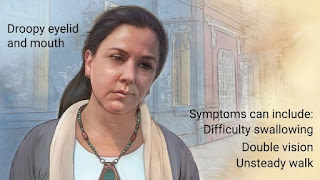Hierarchy of Mobility Skills
The hierarchy
of mobility skills begins with the lowest level of mobility skills, bed mobility,
and progresses upwards to highest level of mobility skills, community mobility
and driving. The hierarchy (lowest level to highest level): (1) bed mobility, (2)
mat transfer, (3) wheelchair transfer, (4) bed transfer, (5) functional
ambulation for ADLs, (6) toilet and tub transfer, (7) car transfer, (8) functional
ambulation for community mobility, and (9) community mobility and driving.
 When I think
about the developmental stages of children and the process of pre-baby steps
(reflex) to learning how to stand, then walk and run—it makes perfect sense. I
would not expect someone who has lost strength in their lower extremities to
progress from a mat transfer to having the ability to drive alone to the
grocery store. I think the Hierarchy of Mobility Skills is organized in a sequence
that begins with the most basic level of movement (and environment) that a
client would be able to achieve, which is bed mobility. For example, a client
will need to master the skill of bridging and seated scooting before you would
expect them to sit on the side of the bed to be transferred to a wheelchair.
Likewise, a client would need to master functional ambulation for brushing their
teeth and combing their hair, before you would expect them to independently master
a tub transfer. I think the hierarchy takes
into consideration the muscle groups necessary for movement, as well as joint
ROM. Each step requires a higher level of muscle engagement, ROM, flexibility and
balance. The only skill placement I’d like to understand more is a mat transfer.
This skill may not apply to everyone, but the placement makes the most sense, in
relation to the other skills of the mobility hierarchy.
When I think
about the developmental stages of children and the process of pre-baby steps
(reflex) to learning how to stand, then walk and run—it makes perfect sense. I
would not expect someone who has lost strength in their lower extremities to
progress from a mat transfer to having the ability to drive alone to the
grocery store. I think the Hierarchy of Mobility Skills is organized in a sequence
that begins with the most basic level of movement (and environment) that a
client would be able to achieve, which is bed mobility. For example, a client
will need to master the skill of bridging and seated scooting before you would
expect them to sit on the side of the bed to be transferred to a wheelchair.
Likewise, a client would need to master functional ambulation for brushing their
teeth and combing their hair, before you would expect them to independently master
a tub transfer. I think the hierarchy takes
into consideration the muscle groups necessary for movement, as well as joint
ROM. Each step requires a higher level of muscle engagement, ROM, flexibility and
balance. The only skill placement I’d like to understand more is a mat transfer.
This skill may not apply to everyone, but the placement makes the most sense, in
relation to the other skills of the mobility hierarchy.

Comments
Post a Comment